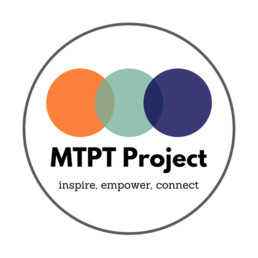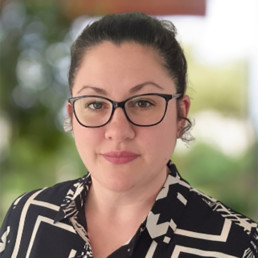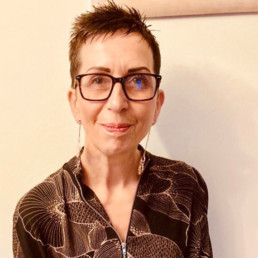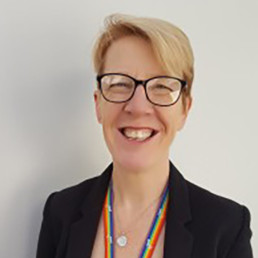Cultural Intelligence in the Classroom

Written by Cecilia Harvey
A quadrilingual Social Anthropologist whose passion for the richness of diversity and the psychology of the human race, Cecilia focuses her Equity, Diversity & Inclusion work on connecting people through difference. As a subject matter expert, Cecilia has driven and coordinated strategic initiatives centred around identity, gender, LGBTQ+, ethnicity and disability, working with multiple stakeholders. Accomplished in designing training programmes such as unconscious bias awareness, microaggressions and inclusive language, Cecilia’s deep understanding of culture, psychology and behaviours has allowed her to become an Accredited Facilitator in Cultural Intelligence (CQ ®).
In 2024, cultural intelligence (CQ) is not merely a desirable trait but a critical competency for thriving in a globalised, diverse, and interconnected world. In sectors ranging from business and education to diplomacy and personal interactions, CQ equips individuals and organisations with the tools necessary for success and positive contributions to global society. As migration continues to shape societies, CQ plays a pivotal role in fostering cohesive communities.
The benefits of CQ extend beyond the business realm. Educators, in particular, can greatly benefit from high levels of cultural intelligence. Educational institutions that host international students or conduct exchange programs reap significant advantages from faculty and staff with high CQ. It enhances the educational experience by creating a more inclusive and understanding academic environment. Students with high CQ are better prepared for global citizenship, possessing the skills to thrive in diverse settings.
By fostering CQ, educators can better support their students, leading to improved academic outcomes and a more inclusive school community. Just as businesses benefit from CQ, so too do educational institutions, which create environments where everyone can succeed and thrive. Investing in cultural intelligence is not merely a strategic business move; it is a transformative approach that can revolutionise education, leading to a more inclusive and effective learning and working environment.
Here’s how CQ can help educators navigate effectively in increasingly diverse classrooms:
- Enhanced Communication: Educators with high CQ can better understand and interpret the cultural contexts of their students, leading to more effective communication. This understanding helps address the unique needs of students from diverse backgrounds.
- Inclusive Curriculum Design: CQ equips educators with the knowledge to design curricula that are inclusive and reflective of diverse cultural perspectives. This enriches the learning experience and ensures all students feel represented and valued.
- Improved Student Engagement: By recognizing and valuing cultural diversity, educators can foster a sense of belonging among students, leading to higher levels of engagement and participation in the classroom.
- Conflict Resolution: High CQ allows educators to navigate and mediate conflicts that may arise from cultural misunderstandings. This skill is crucial for maintaining a harmonious and productive learning environment.
- Professional Development: For educators, CQ is an essential component of professional growth. It encourages continuous learning and adaptation, keeping educators at the forefront of best practices in multicultural education.
- Cultural Sensitivity in Assessment: Understanding cultural differences in learning and assessment styles helps educators develop fairer and more effective evaluation methods. This ensures that assessments are truly reflective of student capabilities, not biased by cultural misunderstandings.
- Personal Development and Global Awareness: On an individual level, CQ fosters personal growth and global awareness. It encourages empathy, open-mindedness, and adaptability, qualities essential for both professional success and personal enrichment in an increasingly interconnected world.
Equal Pay Day

Written by The MTPT Project
The UK’s only charity for parent teachers, with a particular focus on the parental leave and return to work period.
This Autumn, we celebrate International Equal Pay Day (18th September) and the UK’s Gender Pay Gap Day (probably around the 22nd November).
“Celebrate” is probably the wrong term for it, with the United Nations telling us that “Across all regions, women are paid less than men, with the gender pay gap estimated at around 20 per cent globally.”
Out of 146 countries, the UK ranked 15th in a 2023 World Economic Forum comparison, up there with the best and trailing just behind Iceland, Namibia, New Zealand and Rwanda, amongst others.
Fifteenth out of 146 sounds great but… it’s not that great. The UK still has a gender pay gap across all industries of 14.3% meaning that women are paid (on average) 86p for every £1 that men are paid.
In the education sector, it’s even worse, with the gender pay gap standing at 18.1%. Some multi-academy trusts (we won’t name them) fare terribly, with gender pay gaps of up to 44.6%. Why not enjoy the government’s brilliant Search and Compare tool that lays the facts bare in a simple click to satiate your curiosity?
While the graphs in ASCL et al.’s updated 2023 report indicate that a slight gender pay gap exists at almost all levels (female classroom teachers actually slightly outearn male classroom teachers), a seismic shift happens between the ages of 30-39, particularly between 35-39 when – you guessed right – teachers are most likely to become mothers.
57% of female teachers aged 30-34 are mothers, jumping to 77% for women aged 35-39. During this time, the gender pay gap increases by between £846 (“other leadership”) to £2,131 (headteachers) per year. Classroom teachers – previously outearning their male counterparts by £143 per year – suddenly suffer a wage gap of £1,253.
The explanation: of course, it is the motherhood penalty in action. Studies largely agree that “women’s inability to combine work with family seems to account for the lion’s share of the pay gap” and in Missing Mothers – a report co-authored by The MTPT Project and The New Britain Project – we explain how this impact is being felt in teaching.
Motherhood means that we are losing experienced teachers in droves; they are paid less when they remain in the profession, and are underrepresented at leadership level.
Solving the gender pay gap in any industry is complicated. The same goes for what we like to term more precisely, the “fiscal motherhood penalty in education”. But the Missing Mothers report lays out one simple recommendation to government: shift the investment currently focused on recruitment, to retention.
Specifically, focus on retaining and improving working conditions for women aged 30-39 by addressing and reducing the motherhood penalty.
Want to do more this autumn to reduce the impact of the motherhood penalty in education? Book in a 30 minute call with Emma at The MTPT Project between 18th September – 22nd November. She’ll share more about why the motherhood penalty exists and the right questions to ask, and strategies to implement to make a real difference in your organisation. The fun gimmick? She’ll charge you the rate of your organisation’s pay gap for the consultation session.
KCSIE 2024: Safeguarding LGBT students

Written by Lilly Emma Thynne
Lilly Emma (she/her) is a postgraduate student at Lancaster University (2024-25). Previously, as a teacher in state and private secondary schools, she has held additional pastoral and pedagogical responsibilities as Deputy Designated Safeguarding Lead, Resident Tutor (boarding), and Lead for Technology in Teaching and Learning.
Keeping Children Safe in Education (KCSIE) has significantly changed the guidance for safeguarding LGBT+ students. These changes remain under review, pending the publication of guidance for supporting ‘gender questioning children’. To avoid confusion, these changes can be considered alongside other sections of KCSIE (statutory guidance), legislation, and non-statutory guidance.
When writing policies, clarity of language is important. KCSIE states, “All staff should be aware that terminology is a significant component in many safeguarding and wellbeing issues” [s22, p11]. For the purposes of this post:
- Transgender children are children whose gender identity does not match that assigned at birth.
- Gender-questioning children are children who are questioning whether their gender identity matches that assigned at birth.
- Trans+ refers to transgender and gender-questioning people.
- Child/children refers to anyone 17 years or younger.
- Young person refers to anyone 18 years or older.
This post identifies four changes which can be better understood by considering pre-existing legislation and guidance:
1.Removing reference to “trans” students
KCSIE removes reference to “trans” students, replacing it with “gender questioning”.
The Equality Act 2010 and Schools (2014) guidance identifies that the protected characteristic of “Gender Reassignment” applies to students [page 5]. For example, “failing to protect a transgender pupil against bullying by classmates” may make the school guilty of unlawful discrimination [page 8]. The use of the word ‘transgender’ shows the need for schools to maintain reference to pupils who are actively undergoing gender reassignment in addition to those students who are ‘gender questioning’.
KCSIE (2024) maintains the use of the phrase “transphobic bullying” [s91, p28], which refers to bullying directed at a child for either being or being perceived as trans+. The use of this phrase shows that the DfE has not completely ended the use of the word ‘transgender’.
KCSIE (2024) defines ‘safeguarding’ as, among other things, “preventing the impairment of children’s mental and physical health or development”. By removing reference to ‘transgender students’ and replacing this with exclusive reference to ‘gender questioning students’, students who are confident in their gender identity may interpret this as delegitimisation of their identity, leading to further marginalisation. Research suggests trans+ students who feel rejected by their school community are at greater risk of isolation and poor mental health due to internalised transphobia (Horton, 2023; Chodzen et al., 2019).
The Gender Recognition Act (2004) allows anyone aged 18 or older who has lived in their affirmed gender for at least 2 years with a diagnosis of gender dysphoria to change their gender legally. Any young person granted a Gender Recognition Certificate (GRC) should have their legal sex changed on school records, and a school should not disclose the student’s former gender. Reference to ‘transgender’ students may be required in a policy to explain this process.
2. Advocating caution towards social transition
KCSIE now references that the Cass review identified, “caution is necessary for children questioning their gender as there remain many unknowns about the impact of social transition” [s206, p55].
The Cass Review (2024, p.164) recommends, “A more cautious approach needs to be taken for children than adolescents”. For adolescents, the review explains, “exploration is a normal process,” and school staff should provide support to protect the student from bullying. Cass says that children who are not yet adolescents must also have their voices heard. If a child pursues social transition, professionals should ensure the child knows all options remain open and that they will be flexibly supported.
The Equality Act 2010 and Schools (2014) states, “Schools need to make sure all gender variant pupils, or the children of transgender parents, are not singled out for different and less favourable treatment from that given to other pupils” [p.17]. For example, a school may need to consider flexibility when applying a uniform policy to a trans+ student [p15].
KCSIE (2024) reminds us that “Under the Human Rights Act, it is unlawful for schools and colleges to act in a way that is incompatible with the convention” [s82, p26].
3. Removal of the requirement for a ‘safe space’
In 2023, KCSIE required schools to “provide a safe space” for LGBT students to share concerns with a trusted adult. In 2024, KCSIE removed “safe space” and replaced it with a more general requirement to “create a culture”.
KCSIE 2024 states that schools and colleges should, where needed, provide a “physical space” for students who are victims of abuse. While not all LGBT+ students are victims of abuse, a report (JustLikeUs, 2021) found that:
- LGBT+ students are twice as likely as their peers to experience child-on-child abuse.
- 1 in 5 LGBT+ students hear negative language daily about LGBT+ people.
- LGBT+ students are x3 more likely to be bullied at least once a week.
- Only 21% of LGBT+ students who were bullied told a teacher.
For this reason, an allocated safe space for LGBT+ students where they can easily find trusted adults may be instrumental in safeguarding these students.
4. Removal of reference to LGBT+ inclusion in PSHE
KCSIE has removed a paragraph reiterating the need to include LGBT content in the RSE curriculum.
Relationships and Sex Education and Health Education statutory guidance (2021) remains unchanged. When age-appropriate, schools must “ensure [LGBT] content is fully integrated” into the RSE curriculum. This content should not be stand-alone. The guidance defines LGBT as “Lesbian, Gay, Bisexual and Transgender”.
Summary
As safeguarding teams enter the new academic year and continue to support trans+ students, consideration of pre-existing legislation and guidance is important to better understand these changes to KCSIE, which remain under review.
References
Guidance and Legislation
The Equality Act 2010 and schools (2014) https://assets.publishing.service.gov.uk/media/5a7e3237ed915d74e33f0ac9/Equality_Act_Advice_Final.pdf
Gender Recognition Act (2004) https://www.legislation.gov.uk/ukpga/2004/7/contents
Relationships Education, Relationships and Sex Education (RSE) and Health Education (2021) https://assets.publishing.service.gov.uk/media/62cea352e90e071e789ea9bf/Relationships_Education_RSE_and_Health_Education.pdf
Keeping Children Safe in Education (2024) https://assets.publishing.service.gov.uk/media/66d7301b9084b18b95709f75/Keeping_children_safe_in_education_2024.pdf
The Human Rights Act (1998) https://www.legislation.gov.uk/ukpga/1998/42/contents
Research
Horton, C. (2023) Gender minority stress in education: Protecting trans children’s mental health in UK schools, https://www.tandfonline.com/doi/epdf/10.1080/26895269.2022.2081645?needAccess=true
Chodzen, G., Hidalgo, M., Chen, D., Garofalo, R. (2019) Minority Stress Factors Associated with Depression and Anxiety Among Transgender and Gender Non-Conforming Youth, https://www.jahonline.org/article/S1054-139X(18)30295-7/abstract
Cass, H. (2024) Independent review of gender identity services for children and young people https://cass.independent-review.uk/home/publications/final-report/
Just Like Us (2021) ’Growing up LGBT+’ https://www.justlikeus.org/wp-content/uploads/2021/11/Just-Like-Us-2021-report-Growing-Up-LGBT.pdf
Don’t go Short on Inclusion – Be-long

Written by Fliss Goldsmith
Fliss is an Emotional Wellbeing and Empowerment Coach and Inclusion and Belonging Consultant. Having worked for 2 decades across the Education sector as well as with individuals and corporates she has a breadth and depth of experience striving to create intentionally inclusive spaces for authentic belonging.
I was blessed to be part of DiverseEd’s July event at the Brownfield Institute in Wolverhampton. On arrival the empowering energy was palpable, and I knew immediately that everyone in attendance had a shared vision – for a kinder, safer, fairer future for education.
My part in the day was to deliver a session on Belonging and how that looks in education spaces. As an Asexual, disabled cis gender woman I have my own perspectives and wanted to share them as well as gain those of others. I remind myself often that intersectionality is at the heart of our learning.
We began with sharing our understanding of belonging – what does it mean, feel like and most importantly what is it not. The group was invested and together we found that belonging is about being able to be authentically yourself and still being seen, heard, respected and reflected in a space. The opposite, quite interestingly, of belonging is ‘fitting in’. Fitting in demands that we change who we are to match the space we are in, whereas belonging demands that we remain true to ourselves.
It sounds simple but it really isn’t. Belonging often stops before it gets going because places, people and situations are not inclusive. For too long we have lived in a white, heteronormative, cisgender, able bodied neurotypical, middle-class society with everything designed to support those characteristics. If you fall outside of these then you are faced with being ‘othered’ which immediately precludes you from belonging. As an Asexual I have not felt like I belonged since school, where it was a given that Allonormativity and Amatanormitivity were where we were all headed and if not, then there must be something fundamentally wrong with you. (spoiler alert there isn’t!)
The session held space for the experiences of those in attendance and I was humbled at the response. I heard from a non-binary attendee that they rarely felt like they belonged as they were misgendered and how language was paramount, every misuse of pronouns creating visceral pain. A black woman shared her experiences of racism and sexism within previous job roles and how that had moulded how she presented, shrank herself to not stand out. Ultimately these practices of fitting in create nothing but damage to the physical, mental and emotional wellbeing of the victim.
So how do we do it better in our educational spaces? There is hope and there are so many great Educators out there already trying to create inclusive spaces where everyone is supported in being their authentic selves.
Here are my top 10 ideas for making sure that the spaces you have control over cultivate a sense of belonging for anyone who enters them.
- Prioritize Connection – Create spaces where meaningful conversations can take place.
- Create interest groups – Ensure an accessible way for staff/students to put forward their ideas (anonymous point of entry essential.) Remember the mantra ‘nothing about us without us’ always consult someone who represents the group if they are comfortable being involved.
- Have courageous conversations – you are a role model and if you can share your struggles and challenges this immediately gives others permission to do the same.
- Be Accountable – a clear, kind apology is essential – but it means nothing without a change of actions going forwards.
- Call it in before you call it out. If someone is behaving in a way that contravenes the rules of your spaces, then call them in to see what is at the root of their poor behaviour.
- Celebrate as many ‘days’ as you can – but don’t let it stop there, yes LGBT+ History Month is February but make sure the flags are there all year long.
- Cross curricular representation – Make sure that every subject has resources that reflect different cultures, genders, sexualities, abilities etc.
- Spread the Art of Appreciation – share what you appreciate and get others to share theirs, this harnesses the brains neuroplasticity and creates positive neural pathways making people feel more connected.
- Teamwork is essential but don’t let it isolate people – use numbers not genders for teams and ensure teams are celebrated in a way they are comfortable with (does your Autistic student want to go on stage to get their prize? Maybe, you’d have to ask them- don’t assume)
- Ensure inclusive practices – visual descriptors, announcing your pronouns, inclusive language, accessibility, not making assumptions etc.
Inevitably there will be mistakes, steps sideways and ‘oh no’ moments when trying to build an inclusive space. When we know better, we must do better – so apologise and rectify and model that behaviour as a growth step.
The future needs incredible leaders to ensure we can all authentically belong. You’ve got this!
Becoming an Effective Head of Year: Specializing in Mental Health and Wellbeing

Written by Haji Prempeh
Haji Prempeh is a dedicated professional with extensive experience in secondary education, with a keen focus on children's and adolescents' mental health and wellbeing. She has a strong background in Design & Technology, having taught the subject for several years and held leadership roles across multiple schools, where she successfully led projects on pastoral care, diversity, inclusion, and safeguarding. Currently, she is pursuing an MSc in Children and Adolescents Mental Health and Wellbeing.
As educators, we wear many hats. We are not just teachers; we are mentors, counsellors, and sometimes even the primary source of support for our students. Over the years, I’ve observed the growing challenges that students face, especially regarding their mental health and wellbeing. This observation is what motivated me to create “Becoming an Effective Head of Year: Specializing in Mental Health and Wellbeing.”
Why I Created This Guide
The role of a Head of Year (HOY) is pivotal in any school setting. HOYs are often the first line of support when students encounter difficulties, whether academic, social, or personal. However, despite their importance, many HOYs are not given the specific training or resources they need to effectively address mental health issues.
After speaking with colleagues and reflecting on my own experiences, it became clear that there was a significant gap in resources tailored specifically for HOYs who are focused on supporting mental health. I wanted to fill that gap with a comprehensive guide that provides not only the theoretical knowledge but also practical tools that HOYs can use immediately in their day-to-day interactions with students.
The Importance of Focusing on Mental Health
Mental health is no longer a topic that can be side-lined or treated as an afterthought in our education system. The pressures on today’s students—from academic performance to social media—are immense, and these pressures are showing in increased rates of anxiety, depression, and other mental health issues among young people.
When mental health is compromised, it affects every aspect of a student’s life, including their academic performance, relationships, and overall happiness. Schools must be proactive in creating environments where students feel safe, supported, and able to seek help when needed. This is why the role of a Head of Year is so crucial; they are often the bridge between students and the support systems available to them.
What the Guide Offers
“Becoming an Effective Head of Year: Specializing in Mental Health and Wellbeing” is more than just a manual; it’s a toolkit designed to empower HOYs with the knowledge, skills, and resources they need to make a real difference in their students’ lives.
Understanding Mental Health: The guide starts with the basics, helping HOYs understand the different aspects of mental health and the common challenges students face.
Essential Skills: It emphasizes the core skills needed for this role, such as empathy, communication, and conflict resolution, ensuring that HOYs are prepared to handle difficult conversations and situations.
Practical Support: With ready-to-use templates, referral forms, and checklists, the guide makes it easy for HOYs to implement support strategies right away.
Professional Development: The guide also encourages continuous learning and growth, providing resources for further training and development.
Inspirational Content: I included motivational quotes and reflective exercises to keep educators inspired and focused on their mission.
The Impact I Hope to Make
By creating this guide, I hope to empower HOYs to feel more confident and capable in their roles. When HOYs are well-equipped, they can create a ripple effect throughout the school, fostering a culture of care and support that benefits not just individual students but the entire school community.
Ultimately, I believe that when we prioritise mental health in our schools, we are not only helping students succeed academically but also helping them develop the resilience and emotional intelligence they will need throughout their lives.
You can find the guide here to Becoming an Effective Head of Year – Specialising Mental Health and Wellbeing here.
Cancer helped my Autistic daughter to survive school

Written by Joanne Robinson
Joanne Robinson, BA, MA, PGCE, FCCT, is the Director for Training and Development at TeachUp, a company specialising in professional development for teachers in the UK and internationally. She has also led a number of teacher training programmes, including an iPGCE and an MA in Education with Pedagogy. Prior to this, she taught in secondary education for 16 years. She is keen to promote inclusive education that centres upon the wellbeing and autonomy of teachers as well as pupils.
Making the statement that cancer helped my daughter to survive school sounds quite alarming, but it is something that she and I have discussed at length over the years since this happened to her.
This blog is written with her permission. She is now 26 years old and thriving, so this did occur some time ago. However, the reason I’m writing this now is that I believe it is still resonant for school practices today.
Abigail was diagnosed with leukaemia in January 2011. She was 12 years old at the time, which is quite unusual for this type of cancer. She had just started Year 8 in the school I was also teaching at. Abi had already been diagnosed with Autism just before beginning in secondary. Since then, she has had a further diagnosis of ADHD.
Treatment for leukaemia was gruelling, with two bouts of intensive chemotherapy in the first nine months followed by two years of maintenance chemo. This was the standard protocol for girls back then, although it may have changed as cancer treatments evolve rapidly, thanks to fantastic research trials.
Children may experience some infection, but our consultant advised that life should be normal during the maintenance phase of treatment. However, because Abi was becoming a teenager and experiencing hormonal changes, we found that this wasn’t the case. In the end, she was hospitalised around ten times during her care. Some of those stays were over a month in length and at one, terrifying, point, she contracted neutropenic sepsis and was lucky to have survived.
Abi’s attendance in school was understandably low. It was a really hard two years and, in the end, she dropped back a year in order to regain some of the lost time.
School was brilliant with her. They provided her with a reduced timetable. Because she had very low immunity and her platelet levels meant she was vulnerable to bleeding from knocks and bruises, she was able to spend her breaks in the SEND inclusion room.
Before cancer, Abi was struggling in school because of the difficulties that she had due to her Autism. She found the high school environment very overwhelming to navigate. She was experiencing frequent meltdowns at home. During treatment, she was able to take school at an easier pace, spending time having respite in the SEND room and not forced to interact with other pupils at breaks unless she chose to. Suddenly, her school life was manageable for her.
After treatment ended, Abi’s needs were well-known. Chemotherapy has long-term effects on energy, so school was happy to continue with a reduced timetable and flexibility in allowing Abi breaks when she needed them. She was also in regular attendance in the SEND room. These things were there for her without her having to ask for them – self advocacy can be hard for any child, let alone those with communication difficulties (many time-out systems put the onus on the student to instigate them, which means they are never used).
By the time Abi reached her GCSEs, she did astonishingly well. She was then able to use a similar approach to her time in the school’s Sixth Form.
Abi has since said to me that the accommodations that school made for her cancer were what made it possible for her to complete her studies as a neurodivergent student. In my own teaching experience, I had witnessed many neurodivergent children being unable to cope by the time they reached GCSE: the sheer energy it took to mask every day through this stressful time, repressing behaviours that might be seen as strange by others, would result in them refusing to attend.
There is a lesson here. We have to adapt school practice to accommodate the fluctuating energy levels that occur with neurodivergence. These pupils are often academically capable and should be attaining great outcomes, taking those first steps into fulfilling adult lives. Instead, they are burning out in their teens. Simple changes can adjust the classroom to make it more accessible, and enabling respite or shorter days could be the difference between a neurodivergent child completing school or not.
It should not take a serious illness to ensure proper accommodations are made: neurodivergence is a disability that needs reasonable adjustment from the outset. I think the tide is turning and there is great work being done to raise awareness, but we have a way to go before we can claim with certainty that education is equitable for neurodivergent students.
How to lead a diversity research group

Written by Jayne Carter
Jayne is the Director of Ignite Education Ltd, providing consultancy for practitioners within the Early Years & Primary sector. She uses coaching a a model for change, facilitating professional conversations which are focused on empowering others & generating growth in knowledge & skills.
As part of the L.E.A.D Teaching School Hub’s extensive offer for EDI, I was invited to lead a diversity research group based on Bennie Kara’s fantastic book: Diversity in Schools. This blog is intended to support others who may wish to run similar groups for teachers and school leaders.
The research group was structured around one session per month for each book chapter. It worked well for each participant to read the focus chapter in preparation for the meeting, to be ready to discuss their reflections and implications for their own practice.
Discussions were facilitated around the key messages included in each chapter with the addition of extra resources focused on the needs of the group.
The aims of the research group included:
- To use research & literature as a tool for school improvement
- To develop a culture of peer-to-peer support & critical analysis
- To implement key strategies & approaches at a whole school level
Some of the attendees wanted to focus on whole school implementation, whereas others wanted to improve their own subject knowledge in preparation to share at school.
Each session included a planned gap task based on the focus of the chapter as well as an individual gap task which was identified by each attendee in order to meet the needs of their school.
For example, the third session focused on the chapter ‘How can we create a diverse classroom?’ Everyone carried out the audit included in the book. Individual gap tasks that were chosen included;
- sharing UNESCO inclusion research with members of their SLT
- exploring the free trial of Lyfta as a whole-school EDI resource
- considering how to organise their seating plan to ensure inclusivity
- evaluating the use of cold calling/trio conversations in their classrooms.
Time was planned into the following sessions to discuss reflections from the individual gap tasks and all resources were included in a workgroup padlet. The padlet worked well to ensure that everyone had constant access to key resources/research. It also provided an effective means of communication between meetings.
Being able to meet frequently with attendees helped me as a workgroup lead to understand the priorities for each school and what was important to them. As the meetings progressed, I was able to structure the sessions to become even more personalised to the group’s needs, with additional research and tools being shared and added to the padlet.
Over the seven sessions, attendees enhanced their EDI improvement plan or developed their own EDI plan. The next steps identified after each chapter supported these improvement plans by providing structure and focus.
During the final session the overall impact of and reflections about the workgroup were collected:
- All attendees found the structure of the workgroup useful as it moved from a training session to meetings which were collaborative and supportive of an action research improvement model.
- Attendees liked the planned gap tasks; especially the opportunity to carry out a shared task, which helped shared discussions but also a gap task which was personalised and prompted change at a school level.
- All attendees noted that the additional resources sourced and added to the padlet were valuable with everyone committing to using the padlet next academic year.
As the workgroup lead, the opportunity to guide attendees into analysing research was valuable as it gave me a useful reminder of day-to-day school priorities. One of my own personal outstanding reflections was the knowledge that the plans developed would be sustained as they had been developed carefully and with the vision of not only what needed to be in place but why.
My thanks to Bennie Kara for creating such an accessible and informative book. I hope that this blog encourages others to lead more reading groups or research groups on diversity in schools across the sector.
LGBT+ Education in School - Having Effective Conversations with Parents

Written by Mel Lane
Mel Lane (she/her) is Head of Education at Pop’n’Olly. She has been a primary school teacher and teacher trainer for nearly 30 years and worked in schools on LGBT+ inclusion policies with thousands of children and school staff. Mel is a co- author of What Does LGBT+ Mean? (Pop’n’Olly, 2021).
When it comes to LGBT+ education in school, parents are often portrayed in the mainstream media as unsupportive and battling with teachers – but the reality is completely different. 82% of parents actively want their children to be taught about diverse families, including those with same-sex relationships. Having worked with over 10,000 children, I have experienced, time and time again, that parents are almost always supportive of LGBT+ inclusion work in school.
However, there are of course still a minority of parents who struggle with, and have concerns, about LGBT+ education. This is why empowering schools and teachers to have effective conversations is important. But how do we do this? Here are some themes that you may wish to include in these discussions:
Ethos and Values
Chances are you already promote equality and celebrate difference in your school. Maybe it’s in your school mission statement? e.g.
‘Brave, unique, caring and kind’
‘Hope, community, respect, love’
‘Respect for each other, Respect for our school, Respect for learning’
LGBT+ isn’t an add-on, it’s part of this whole-school approach. So when having conversations with parents, it’s vital you keep coming back to your whole-school ethos and discuss how LGBT+ education is a part of this.
Children’s Mental Health
We know that children learn better when they feel relaxed and able to be themselves. One teacher was so pleased to share with me how much more animated and engaged a Year 1 child had become after a session on families included two Mums, just like her family. All children benefit from conversations about LGBT+ inclusion because when we celebrate diversity we send a message to everyone that they are welcome in school whatever their uniqueness looks like.
Knowledge and Understanding
63% of 8-15 year olds know someone close to them who is LGBT+ Children are already having conversations about LGBT+ lives and some of them are searching for information online. School is a safe place where children can ask questions of trusted adults to find out reliable, accurate information. UK children all live in a country where being LGBT+ is protected by law and we shouldn’t hide this information from students. In fact, under the United Nations Convention on the Rights of the Child (UNCRC), all children have a right to this information.
Legal Obligations
Helping young people understand and develop positive relationships with people who are different from them is part of UK law and included in the Relationships and Sex Education (RSE) Guidance for Schools
The Public Sector Equality Duty (Section 149 of the Equality Act, 2010) states that schools must have due regard to “the need to eliminate discrimination, advance equality of opportunity, and foster good relations between persons who share a relevant protected characteristic and persons who do not share it.”
Ofsted guidance also states that, “Schools can choose to teach the beliefs of any faith on the protected characteristics. They may explain that same-sex relationships and gender reassignment are not permitted by a particular religion. However, if they do so, they must also explain the legal rights of LGBT people under UK law, and that this and LGBT people must be respected”
Supporting Parents
Sometimes parents worry that life will be harder for their child if they are LGBT+. Sometimes they’re worried about being judged by other parents. Schools often have a lot more experience supporting LGBT+ young people than parents do. A parent of a trans child told me how much better they felt that their child’s school was supportive of their child’s transition – it gave the parent confidence and helped them navigate a completely new and sometimes challenging time.
Conversations with parents almost always eliminate fears, tackle misconceptions and build better relationships. You can find out much more information on how to have these conversations in Pop’n’Olly’s ‘Discussions With Parents’ document.

